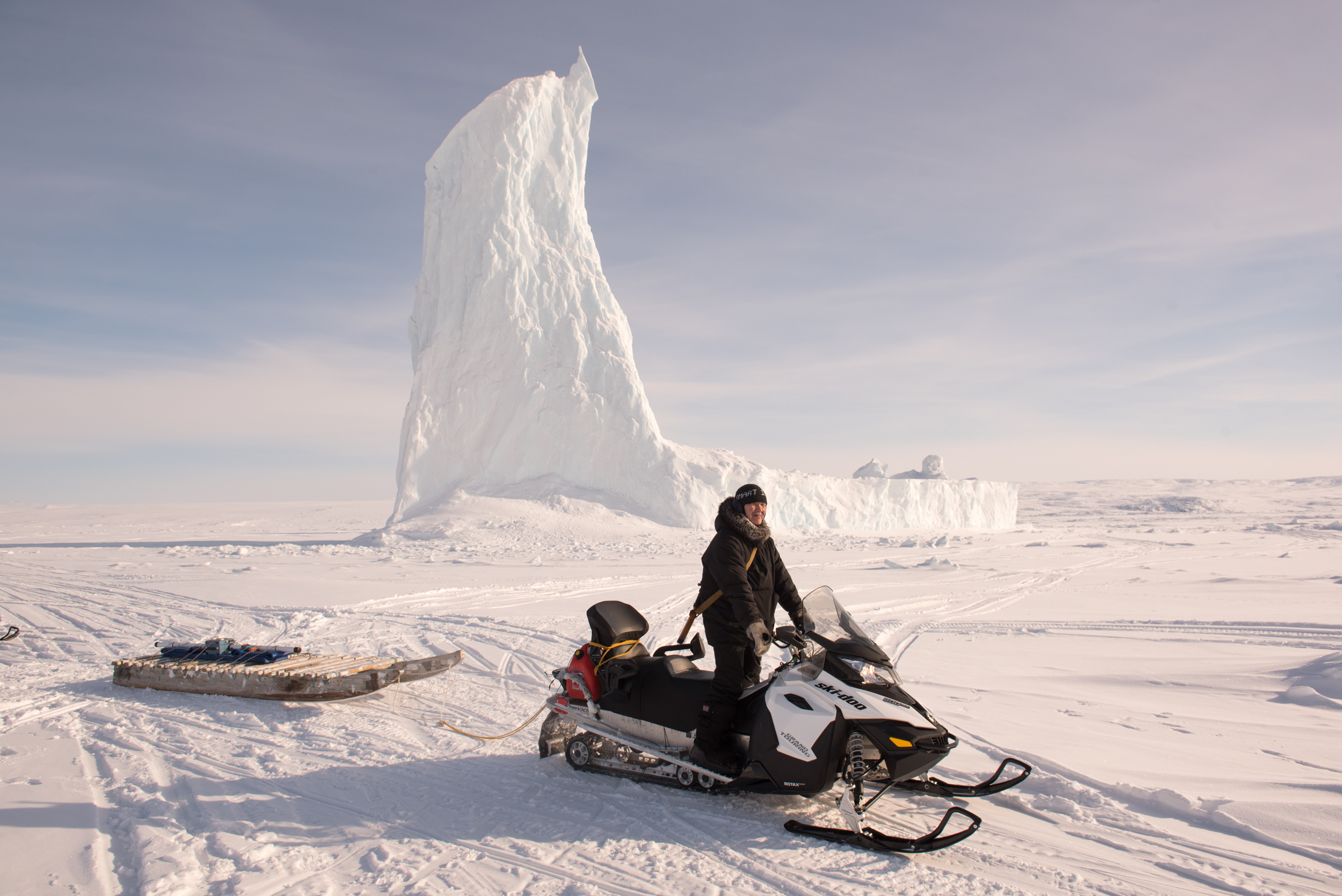
The sea-ice season has traditionally been a time of opportunity in the Arctic. Transportation routes freeze up and hunting opportunities expand. Indigenous knowledge of seasonal changes has been key to using ice-based routes safely. However, a changing climate has introduced new concerns. The later onset of winter, shorter periods of deep freeze, more rain, and changeable snow and wind can make sea ice less predictable.
Dr. Trevor Bell, a geographer with Memorial University in St. John’s, NL, has researched the impacts of climate change on northern communities. His collaborations led him to develop and adapt technologies for testing ice temperature and thickness. Sea-ice Monitoring And Real Time Information for Coastal Environments (SmartICE) is a multi-disciplinary partnership of community, academic, government and industry groups. SmartICE aims to integrate Inuit traditional knowledge to inform decisions about coastal sea-ice travel and shipping.
SmartICE is also committed to employing and training Inuit staff to be operators of the technology. Using local knowledge and observations in the data collection process fosters community confidence in the information. The data gathered helps select the safest routes to travel by sea-ice, and so directly supports traditional hunting and fishing activities.
Another recent success for SmartICE was the 2019 launch of The Northern Production Centre in Nain, the first of its kind in Inuit Nunangat. There, Inuit youth are trained to assemble components of the SmartICE stationary sensors, which are then shipped to communities across the North. Training is provided in both technical and social competencies. It is a holistic approach, incorporating Inuit values and traditional knowledge. Young people learn skills that are transferable to other workplaces and future education.
The work that SmartICE does is significant, in terms of jobs and economic impacts in the communities they have partnered with. A main objective is to expand SmartICE services to other communities that requested them. The 2020 ice season saw Inuit from 17 communities from Nunatsiavut to Inuvialuit trained to operate SmartICE equipment and services, with a further seven communities in the planning stages. The economic impacts are significant when one considers the training and employment opportunities SmartICE brings to each community, but more important are the impacts it is having on safety and wellbeing through improved knowledge of ice conditions and potentially greater access to the land for hunting and travelling.